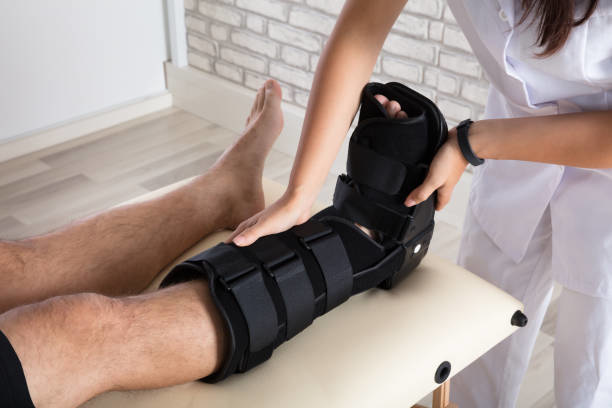How Often Should My Orthotics be Replaced?
If you are considering investing in a new pair of orthotics, you will probably have questions about how often they need to be replaced and when. In fact, one of the most commonly asked questions about orthotics is how long they are able to last. That is why, in this blog, we will go over the three main factors that may require you to replace your orthotics, what they look like, and how they contribute to your orthotic’s wear and tear.
Life Expectancy
Custom orthotics are designed to withstand wear and tear from standing and walking, but using them on a daily basis will inevitably result in damage over time. Recreational activities such as jogging will cause inserts to wear out faster. This is because you are placing excessive amounts of stress on the contours and soles of your orthotics. Like a stone in a river, the constant friction will cause the orthotic to be smoothed out and eventually need to be replaced.

Even if the inserts you’re wearing are usually bought recently, specific lifestyle changes may mean having to replace your current orthotics sooner. Changes in lifestyle can affect your gait and alter the way you put the weight down on your feet. These changes can be anything of the following:
Changes in lifestyle that require more time spent on your feet
Significant changes in weight over time
Pregnancy
Experiencing any foot or ankle injuries
Experiencing significant progression of bunions or hammertoes
Major surgeries such as a knee or hip replacement
Of course some simple adjustments may be all you need, but a full refurbishment or replacement might be preferred overall if the changes are great. Situations and you yourself changing ultimately affects how often your orthotics should be replaced.
Materials
The material used to make your orthotics will also affect how long they last and when they need to be replaced. Depending on your activity level, your orthotic’s material will vary as well as their purpose. The two types of orthotics: rigid and soft.
Rigid: These orthotics are crafted from semi-rigid materials like plastic or carbon fiber. They are designed to ease foot aches and strains as well as pain in the legs, thighs, and lower back. They tend to last longer than soft orthotics due to the type of material used. Rigid orthotics may only need to be replaced once a year, depending on activity level and lifestyle changes.
Soft: This type is crafted from softer and flexible materials such as cork, leather or foam. They provide cushioning to take the pressure off sore spots from conditions such as plantar fasciitis or diabetic foot ulcers. Replacement of soft orthotics is needed as often as twice a year depending on activity level and lifestyle changes.
Wearing Down
Over time, the covers and cushioning of orthotics will wear out. When this happens, your orthotics might not feel as comfortable or corrective as they once were. This might result in some of your pain or symptoms starting to return. The sure sign that your orthotics are no longer working is, and always will be, pain and discomfort. Of course nobody wants to deal with the return of their symptoms or pain. That’s why they have the orthotics in the first place. One of the easiest ways to find out before pain and discomfort start happening is simply examining the overall appearance. Take a look at the orthotics in your shoes. If you see any cracks, tears or thinning in the soles, these are all signs that you should replace your orthotics. Damage to the arches of the shoes can be another sign that they are experiencing too much stress, which may be related to your orthotics. However not all wear and tear is a bad sign: if your treads are not wearing out evenly between the shoes and orthotics, that’s a sign that the inserts are not working properly or were not fitted properly.
Orthotic Replacement
There are a few tells and things you should be aware of when it comes to the lifetime of your orthotics. These custom inserts may seem inconvenient to replace when they no longer work for you, but taking the time to ensure proper fit and comfort will prevent issues down the road. When you replace your orthotics, you get a new medical evaluation of your physical problem and an updated solution to continue fixing it. Orthotics will also provide a custom fit that will be able to help support your body and mobility. A product using high-quality materials should even last longer than you would anticipate. They also may be covered by your insurance, so be sure to check your plan. Overall the benefits of having orthotics outweigh the drawbacks of having to replace them.
One Bracing can supply custom orthotics to new and returning patients, offering services in order to provide the best orthotic. We can do custom measurements to ensure the fit is right and as comfortable as possible. Along with a personalized fit, our custom orthotics also are covered through extended benefits plans. Call us at (250) 385-9600 or e-mail us at [email protected] to set up your appointment today!







